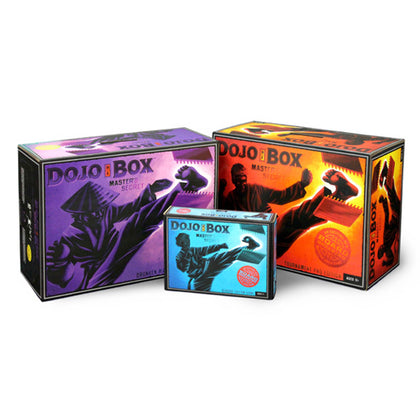

Varnish In Packaging Printing
When you need your packaging or printed material to stand out, consider using varnish to add a pop of depth to your colors or to add a subtle appearance that reflects your brand.
But what is varnish, exactly? What are the different types of varnish coating? What type of varnish will be the best to use for your project?
We’re happy you asked. Varnish is a type of coating that can be applied to printed materials to create a high-quality, polished look. There are many different types of varnish available, so it’s important to select the right type for your project.
For example, if you need your packaging to be extra durable, you may want to use a high-gloss varnish. On the other hand, if you’re looking for a more subtle appearance, opt for a matte or satin varnish.
Working with a box manufacturer on a new packaging project can be hard if you don't understand the terms. There's a lot of options for packaging, and you need a team to help you make the right choice. So this blog should give you a better understanding of this coating.
Table Of Contents
What Is Varnish Coating?
Varnish is a protective coating applied during or after printing to increase the lifespan of your printed materials. You can also use it as an added touch for that extra style point! It comes in many different styles, depending on what type of design you are looking for - whether they need protection against wear & tear by everyday life or just want something snazzier than their standard package design.
It’s important to note that varnish must be applied over a well-developed ink design to achieve the best results. The coating will change the look of your design by intensifying its colors, making it more vibrant, adding shine, or dulling it down depending on the type of varnish used.
Due to this reason, you must use an experienced printer that can provide insight into which type of varnish will work best with your specific product needs in mind.
4 Types Of Varnish Coating
There are many various varieties of varnish in the printing industry, and each type has its own set of effects that you'll want to learn more about to pick the correct style for your custom product packaging.
Gloss
Gloss is frequently used on the whole surface of your printed package or in select places. It intensifies and produces color contrast while also adding depth and complexity to the hue. To the naked eye, colors appear to "jump out" more. However, a high gloss coating under direct illumination can reflect a significant amount of the light, making the writing difficult to see.
Matte
Matte provides your packaging design a softer, more subtle look. The matte varnish, as opposed to gloss varnish, is preferable for packaging with a lot of writing or text that has to be read from a distance since it is non-reflective. It's worth mentioning, though, that the look is much softer than with a gloss finish. Gloss is still the superior option if you want your package to stand out and be noticed.
Strike-Through Matte
Strike-Through Matte varnish and gloss varnish are both applied to separate sections of the printed artwork using this printing process. Except when a more striking glossy look is required, the matte varnish is applied to all areas. As a result, the matte varnish cuts through the glossy finish and allows it to shine while softening the rest of the box. It's an excellent technique to distinguish between the two styles of packing.
Satin
A blend of matte and gloss to provide a "best of both worlds" varnish that is velvety but resists fingerprints, smudges, and scuffs. It seems as though no varnish has been applied, so you can still enjoy a subtle aesthetic while providing greater shipping protection for your packing.
Benefits Of Varnish Coating
Varnish gives a coating of quality to your box design or printed goods. It not only protects against scuffs, fingerprints, and smudges, but it also boosts the product's perceived worth.
Varnish can be applied in a variety of ways, including spot finishing or several operations that cover the entire sheet. It is highly versatile in terms of application, allowing for some distinctive and intense appearances.
Wet trapping, for example, involves applying varnish to wet ink during the printing process to guarantee that the two blend together to produce a distinct style. When using dry trapping, the ink is dried first, and then the varnish is applied by the press when the package is run through it again.
Drawbacks Of Varnish Coating
One main drawback of varnish is that it does not provide the same level of protection as other coatings such as UV coating or aqueous coating (AQ).
Varnish is also not very eco-friendly, and it must be applied with care to avoid hazardous byproducts being discharged into the atmosphere.
Consider how your choice of varnish will affect your soft-touch coating or lamination, matte or gloss lamination, and embossing or debossing options.
Using Varnish Coating As An Effect
Varnish is split not only into distinct varieties, such as satin and gloss, but also into different processes.
One of the most popular solutions, for example, is gloss UV coating, which is both protective and high-impact. Gloss UV coating is more durable than other forms of varnish if your bespoke boxes or packaging will be handled often.
The UV in UV coating refers to the process of applying a liquid coating and then curing it with UV drying lamps. As a result, the completed product is extremely resistant to being scratched or scraped.
Consider raised UV coating if you want to give your package an even more sensual effect. This helps "volumize" the printed area or design by generating a raised region that stands out not only aesthetically, but also tactilely — the difference between the raised and non-raised areas can be felt.
A spot UV pattern is another excellent method to draw attention to and concentrate on your package. This implies that just a little portion of the package, such as your logo, is glossy; this is the section that attracts the eye and reflects light.
Is Varnish The Same As Laminating?
Varnishes and laminates are not interchangeable.
However, both laminates and varnishes relate to the same procedure, in which a protective coating is applied to a piece to make it appear more sumptuous or softer. Both laminates and varnishes protect your retail packaging from harm, however laminate protects your retail packaging more than varnish.
Varnish is a considerably more cost-effective approach to provide a layer of basic protection to your goods without investing in the higher cost of laminates in many circumstances, especially if your product isn't used frequently.
Additional Techniques For Varnish In Printing
There are a variety of options to choose from, there is spot Varnish to high gloss coatings to a softer, more subtle matte that gives your goods a more sumptuous look to velvet-like satin that adds a touch of softness and refinement.
You want your package to have a specific look and feel about it. Whether you want to convey the look of an elegant package that begs to be opened, or a high-impact, glossy, eye-catching piece that demands attention, every package has its audience and every audience has certain expectations in mind.
Whatever it is you're looking for, customers will notice when you go the extra mile!
Create Custom Packaging With Varnish Coating!
Using varnish coatings can be a great way to make your packaging design POP and stand out from the competition. With so many varieties and processes of varnish coating available, there is sure to be one that will fit your needs. Not only does varnish protect your product, but it can also give your package an elegant look or high-impact gloss finish that will draw attention. If you're looking for a more subtle effect, consider using a matte varnish instead.
Let us know if you need help choosing the right varnish coating for your needs! Contact a representative, or put in an RFQ on our site today.




